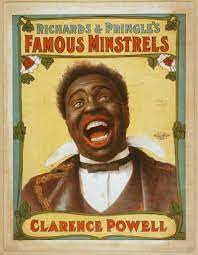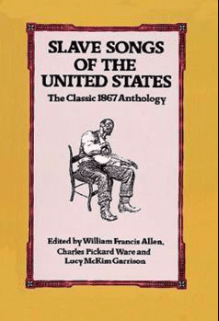The Commodification of African American Music By Sierra Simmons

The commodification of music is music made for the purpose of making money, not art, or heartfelt individual expression.This process has been seen often in the United States, and can be seen specifically in black music/sound.
Black music is composed of unique and dynamic sound elements, music in the black community was a way to express racial pride, bring the community together, shoe love, fear, and more. Due to oppression in the United States Black music was never able to be used to make a significant amount of money, but white people took wind to black music and used it for their own financial gain.
Commodification during the time of Slavery
The first efforts of commodification can be seen during slavery in negro spirituals. enslaved Africans often sang songs and made music as a way to pass time, praise, communicate, and re-establish their humanity. music during this time period laid the groundwork for negro spirituals, the ring shout, and folk music. The music was composed of many elements such as call and response. This music was used by the enslaved only for spiritual enrichment. However, white Americans found out about the popularity of such music and were fascinated by the Africans ability to use music to express emotions along with different sounds from varying instruments. A group of white abolitionists created and composed a songbook of slave music and sold the book to other white Americans; not giving any of the profits to the enslaved but keeping as all their own.
Commodification in the 1800s- 20th century
Negro spirituals eventually led to new genres such as gospel, ragtime, and jubilee quartets
quartets were groups of four , mostly men. who made their money through entertaining. they were used in movies and played on the radio. quartets were known to be played in the genre of gospel and ragtime. they were popular because they allowed black people to showcase their talents with upbeat, fast-tempo music. This caught the attention of white record companies who took their music and sold sheet music for other artists to perform for compensation, while they also were able to make money in films, on radio, and in other shows. further into the 20th century the famous ragtime performer and pianist Scott Joplin commodified his own music by selling his sheet music for his songs. Joplin made over 1 million dollars and was successful in commodifying his music.



After ragtime in the black community, Jazz music became popular for it unique timbre and sound. Artist such as Duke Ellington, Louis Armstrong, and Billie Holiday were able to make a great deal of money performing and producing their music. making music for profit became very popular in the black community overtime. Black music had changed over the course over time to accompany the white sound. Pretty soon songs traditionally sung and performed by black people were being stolen by white people are performed for more money. The radio and record selling became a big deal. most Americans were consuming their music at the time. All types of genres of music were sold as records, soul, blues, jazz, and so on. the 60’s were a huge time for jazz music. It was a new sound that came from combining different genres and traveling up North. although black jazz artists were able to record and make money, white artists would cover their song and make a lot more money because white individuals could afford to buy more records than in the black community. the same thing happened to blues artists, however WC Handy was able to generate wealth for himself despite white American commodification.
Eventually, record companies like Motown began to record black artists and distribute their music to both black and white audiences. unfortunately, that meant that many black artists were passed over and their music was successfully adopted by their white counterparts.
Commodification during the 1900s

Today's Commodification Commodification through technology
Although whites conyinued to take and make money off of black music. Eventually, white radio shows were forced to play black artists and their songs which allowed them to reach a wider audience. Today the most common type of commodification is through technology. now there are hundreds of music streaming services and people can listen to music straight from their devices. the radio is used to expose people to different types of music. and social media plays a big role in spreading information about new music, this began in the early 2000s and continues to this day.


